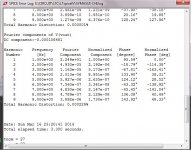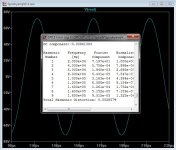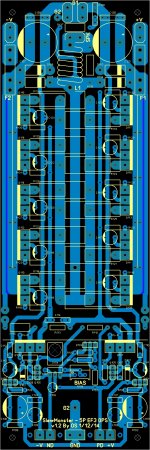I appreciate your efforts, OS. It doesn't matter what one does, there will always be critics. Often that is good, sometimes not.
I think I've just about gone blind looking at the 5P OPS files and have them now fully 'tweaked'. Just adjusted a few hole sizes and have reviewed very carefully. Attached is a ZIP of the Gerber / Excellon files, including my Sprint file.
I have made every effort to ensure the information posted here is accurate and correct, but I can not make any warranty if you choose to use these files. This is the package I will be using personally.
Thanks , JK !
Those look real nice ... can I have a pair ?
It would be nice to have ... so I can personally test the next
"level" of IPS's !
 😀
😀PS - I have the OPS "in my mind" - I see no errors. 😉
Edit - consider larger pads/traces for the driver/multiplier section ... some manufacturers
have trace/pad lifting issues (in case of a rework).
OS
Last edited:
Thanks , JK !
Those look real nice ... can I have a pair ?
It would be nice to have ... so I can personally test the next
"level" of IPS's !😀
PS - I have the OPS "in my mind" - I see no errors. 😉
Edit - consider larger pads/traces for the driver/multiplier section ... some manufacturers
have trace/pad lifting issues (in case of a rework).
OS
I'm working on getting a quote for some now. Looks like pricing get reasonable at about the 12 pair (24 pieces) level from the supplier I use. I'm just clarifying with them about the mix the NPTH and PTH so we will see soon.
And of course I would reserve a set for Uncle OS 😉.
I'm working on getting a quote for some now. Looks like pricing get reasonable at about the 12 pair (24 pieces) level from the supplier I use. I'm just clarifying with them about the mix the NPTH and PTH so we will see soon.
And of course I would reserve a set for Uncle OS 😉.
The only reason I mentioned the pads is in other threads board Q issues
are surfacing. DIYA's "badger" PCB's... with my larger pads/their supplier has
been a real good combo - 0 lifted pads in all the builds. I personally
have reworked some pads 3 times with no issue - tough.
OS
Jason, in your Fabrication Notes.txt it states 1oz copper. Is this typo - 2oz?
No typo. With the copper on both sides in play I don't see a reason to pay a premium for 2oz copper, at least for the first run anyway.
Nope , what I'm saying is that the CFA amps with blockers are "weak"OS so you are saying CFA types for mids and highs and the slewmonster for the bass?
in the bass department - they change from golden HF to mediocre LF.
The NAD is indistinguishable from 3hz to 20Khz, as is the spooky leach.
The symasui is the best of the "blocker cap" amps.
The blameless isn't bad , either. VFA is better for a DC cap.
The vssa topology - to stay simple ... uses 2 caps.
Everything is a tradeoff /compromise . 🙁
Bottom line - it appears the NAD and leach (spooky) are best "across the
board" (LF/HF/clip/THD) with the SYM a close second.
In raw performance - that's how they rate.
PS - insider secret .. guess what topology most (HQ) linear BJT subwoofer plate amps
are ??? The SYM is most common - I wonder why ??
OS
Last edited:
THD20K fetish ...
Someone on the CFA thread told me to run all
my designs <50hz ... I was surprised !
Uber clean 20khz blameless amps and others truly
blew chunks at LF.
So , 5-50HZ testing became standard fare.
To answer the above ??? ... look at the SYM @ 1hz/2R !! (below)
That's why it is a good sub amp !
lost a little gain - but it "fly's" 😀
PS - it's also economics ... 1 cap /5 to-92 VAS + cheap EF3 = much XMAX !
OS
Someone on the CFA thread told me to run all
my designs <50hz ... I was surprised !
Uber clean 20khz blameless amps and others truly
blew chunks at LF.
So , 5-50HZ testing became standard fare.
To answer the above ??? ... look at the SYM @ 1hz/2R !! (below)
That's why it is a good sub amp !
lost a little gain - but it "fly's" 😀
PS - it's also economics ... 1 cap /5 to-92 VAS + cheap EF3 = much XMAX !
OS
Attachments
Last edited:
Nice circuit Mr. O Stripper,
Can I have final files of it 5 pairs version,schematics, layout and p.c.b.
Regards.
Can I have final files of it 5 pairs version,schematics, layout and p.c.b.
Regards.
Bottom line - it appears the NAD and leach (spooky) are best "across the
board" (LF/HF/clip/THD) with the SYM a close second.
In raw performance - that's how they rate.
OS
Hi OS,
Can you tell me the topology for NAD and Leach and SYM? CFA or VFA's??
[there is no way I can remember all the names and relate to them circuit-wise]
Thx-RNMarsh
Hi OS,
Can you tell me the topology for NAD and Leach and SYM? CFA or VFA's??
[there is no way I can remember all the names and relate to them circuit-wise]
Thx-RNMarsh
The "NAD" - same as Bonsai's NX , a CFA with positive FB servo/CCS's.
Same diamond/2nd CF stage as NAD M3 or many Marantz CFA's.
The "spooky Leach" is the Georgia Tech professors "baby" - dual cascoded LTP
fully symmetrical VFA. I gave it a hawksford ,2 CCS's , and an inverting
servo (hk990 servo) ... it is a CFA killer in this form. 70 parts for the IPS ..
it better be !! 😱
The SYM (or symasui) is a VFA - symmetrical single ended (LTP) cascoded -
wilson VAS . Has a current source , as well.
"Symasym" was the famous DIYA project - likely the most built
project for Class AB.
I brought all 3 of these to the limit ...
#1 is the the Leach - 2-6ppm 5HZ- 30Khz ...
able to leap tall waveforms (160V p-p), at 50 PPM. (check this out ! below)
Not bad for 25 YO design ... 30ppm is the worst it will do at 3R /150V.
Slews at 220V/us+ ... and it's a VFA !
SYM is also a "swinger" ...150V p-p is easy and clean.
The CFA is also nice , Hawksford's can really dish out a linear high
voltage signal.
ALL 3 clip marvelously . Just a tiny bit of saturation.
OS
Attachments
OS - JKuetemann
Excellent job.
JK do you plan to make a groub buy for 5 pairs version ?
OS i have a few Toshiba 2sc5359 and 2sa1987 from TITAN 2000 Match for this amp ?
Regards Nikos.
Excellent job.
JK do you plan to make a groub buy for 5 pairs version ?
OS i have a few Toshiba 2sc5359 and 2sa1987 from TITAN 2000 Match for this amp ?
Regards Nikos.
The TSSA had very good, snappy bass with plenty of punch. Bass is hard to judge as it is too speaker dependant. You could have some sloppy subs that are made to just move air and nothing else, reproducing kick drum or other midbass duties. Not for me. When i say body, I am talking about the sound of voices, cello's, electric guitars. With voices, it is like hearing a Broadway singer instead of a blues singer, even though it is a blues track. With a Cello, it is about hearing the texture and tone of the instrument. Tin Pan Alley, by Stevie Ray Vaughan is a great track to test for body or tone, using hi guitar. It should be a big, rich, full sound, not clinical and cold. THD helps tell the story, but it is a red herring to some degree.
Thanks , JK !
Those look real nice ... can I have a pair ?
It would be nice to have ... so I can personally test the next
"level" of IPS's !😀
PS - I have the OPS "in my mind" - I see no errors. 😉
Edit - consider larger pads/traces for the driver/multiplier section ... some manufacturers
have trace/pad lifting issues (in case of a rework).
OS
My supplier is suggesting making all component pads PTH. I can say go ahead as it is if folks want NPTH in the less critical areas or I can quickly change the board for all PTH. PTH will make rework more difficult. I could (though not likely required) also fatten things up as per OS's suggestion. I may just go ahead as is and if more are needed submit those changes then. Opinions?
Some boards are on order without any modification to the files as it related to the PTH query. It can be decided later if it needs to be addressed with changes.
JK,
These boards are double sided? If they are double sided without thru hole platting doesn't that mean you have to solder both sides of the board to use the double traces?
These boards are double sided? If they are double sided without thru hole platting doesn't that mean you have to solder both sides of the board to use the double traces?
>FacePalm< NO, where there is connection to both sides the holes are PTH, the question arose from the supplier as to why they weren't ALL PTH, even where the copper is only on the bottom. So, for the time being, in places where the copper is only on one side the holes are NPTH to hopefully make potential rework easier and where there is copper on both sides the holes are PTH.
Thanks JK,
It seemed that would have been rather strange and a real pita if you had to change a component. Makes sense to me.
It seemed that would have been rather strange and a real pita if you had to change a component. Makes sense to me.
In the rush to reach audio nirvana ...stuffing those boards.
Some , even guru's and master's , will solder in the wrong one(s).
The badger boards are all through-hole , even the single
sided pads. As I said , whomever manufactured them used
HQ material ... they can take multiple reworks.
But , they also have those "fatter pads/traces" 🙂 .
Using these won't increase stray capacitance or induce RF
pickup. It is not too dense a layout in the multiplier/driver area
of the "slewmonster".
OS
Some , even guru's and master's , will solder in the wrong one(s).
The badger boards are all through-hole , even the single
sided pads. As I said , whomever manufactured them used
HQ material ... they can take multiple reworks.
But , they also have those "fatter pads/traces" 🙂 .
Using these won't increase stray capacitance or induce RF
pickup. It is not too dense a layout in the multiplier/driver area
of the "slewmonster".
OS
An example ... and why ??
(below) is your board .. JK.
Larger pads + through hole for any device that might undergo
thermal cycling.
-All to-126/to-3p.
-Anything that will have physical stress.
-larger 1W power resistors (driver/predriver Re).
If something will "blow"... it will be these !!
- any "options" (boosted rails), that might get a future rework.
Just a few ideas...
OS
(below) is your board .. JK.
Larger pads + through hole for any device that might undergo
thermal cycling.
-All to-126/to-3p.
-Anything that will have physical stress.
-larger 1W power resistors (driver/predriver Re).
If something will "blow"... it will be these !!
- any "options" (boosted rails), that might get a future rework.
Just a few ideas...
OS
Attachments
- Home
- Amplifiers
- Solid State
- Slewmaster - CFA vs. VFA "Rumble"


